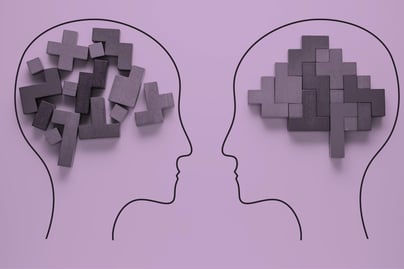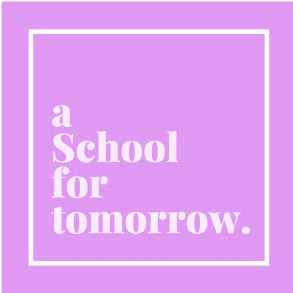THE WAY | WORK | THE CHARACTER WORK
THE CHARACTER OF AN EXCELLENT EDUCATION
The character of an excellent education – a whole education for character, competency and wellness – must be intentional, holistic, and measurable in its impact. We believe that schools should apply their beliefs about an education for civic, performance, and moral character in a deliberate, targeted, and intentional fashion. Education for character should result from a designed landscape of learning that flows from the heart of a school's ethos into every place of learning. It is too important to be anything else, especially when considering that it occurs in everything we do in schools. It cannot be contained to a specific program or activity, even if this activity is essential as a beacon for a community in terms of expectations and the lived experiences of character education.

We do not do character for 40 minutes a week or two weeks a year – we do it all the time. When we implement a well-designed education, we must measure what we do along the way. We need to identify and measure the impact of our work on the character, competencies, and graduate outcomes of students, and the efficacy of our character education program in respect of these, as we would with any other aspect of our curriculum.
We have seen elsewhere that a competency is the expression of the capacity of students to demonstrate how they have grown in an educational process that asks them deliberately and simultaneously to know, to do, to be, and to learn. If multi-dimensional, integrated competencies based on knowledge, skills, dispositions, and learning habits lie at the heart of our educational purpose, everything we do in an education for good character should be guided by these competencies and the graduate outcomes through which we might measure summative attainment of them in a practical context.
What might we make of this? How might learners, educators, leaders, governors, and community members in our schools put forward something that gets us on the front foot with an education for character? How might we be forward-thinking in considering what character, competencies and wellness students require to thrive in their world?
Some of our colleagues ask questions like these and pose answers to them with great confidence already. In our work with schools worldwide, we have seen many wonderful educators plying their trade with earnest application and more than the occasional inspirational moment. We have seen the results of this work in the strong outcomes achieved by so many. We know there is a quiet but persistent mutter in staff rooms and administrators' offices, and perhaps some louder voices elsewhere in school communities, that we could be doing more and quite often that we are not yet doing enough for "the students in the middle".
Our abiding feeling is that many of us are still caught between the worlds of yesterday, today and tomorrow. We have not yet developed a convincing, shared narrative across our sector that mediates between these competing influences to ensure that they genuinely complement each other. We tend to cling to the past and allow ourselves to dress up this conservatism with rhetoric that defends past practices when it is clear that current context and future demands in education require fresh thinking, different models and rapidly evolving practice, especially if we are going to educate students for the type of civic, performance and moral character that will stand them in good stead in the years ahead.
It can become dangerous to a school when the past has become so entrenched, especially in the affection of students and past students, that perspective becomes lost. Tradition may bind us together, but to what end? What might be lost when it is the wrong traditions that are perpetuated? What is the consequence for our schools when their practices move from the realm of being quaint eccentricities that define the uniqueness of institutional culture into rituals that perpetuate things which society, in general, would prefer or even insist were left behind?
The tendency of schools to cling to the past is not supported by the trend in many communities and societies, who are displacing their older and more monolithic models of identity with proposed new norms that seem fragmented and uncertain to those with a more traditional sensibility. There is a lot of change occurring outside schools in this respect without a clear sense of destination, and that is not helpful for an industry like ours that thrives on predictability and order.
The Dichotomy of Experience
Increasingly, in the absence of the influence of other social institutions that have once filled this space, people turn to the educators and ask them to do more – and our teachers groan! They want the best for our students yet feel crowded and hurried in what should be a patient craft of growing children into adulthood. Thus, there is often a clear dissonance between our aspirations for the education of our students and the means by which we are pursuing them. Sometimes, the very competencies and qualities that we want to encourage are clearly lacking in our own makeup; it is hard to teach character if we can’t model it ourselves.
In a similar fashion, there is a patent parallel disparity between our attitudes towards the innovative phenomena of our times and the educator's tools of the trade from earlier times. We continue to be presented with a series of dichotomies:
- The individual vs the collective
- The personalised vs the systematised
- The unique vs the replicable
- The complex vs the simple
- The autonomous vs the hierarchical
- The siloed vs the connected
In responding to these choices, many in schools yearn for a seemingly simpler, warmer and (perhaps) amateur pathway of former times, yet at the same time if pressed, often acknowledge in their hearts that they have to develop a greater facility with a more contemporary and data-driven professional approach, even though they can feel that it is both colder and inherently flawed because it is tainted by the world of the global, professional, corporate entity. Secretly, many hope that if they hang on just long enough, it will either go away or they will be able to retire and leave the work to those who follow.
In other words, many in our schools see where the approach of the twentieth century is no longer adequate in helping students develop good character for their times, but we have not yet formed a consensus as to how best to approach our times, let alone those of the future of the young people whom we are teaching and the character which they will require to inhabit this future with confidence and success. We have not mobilised ourselves as a profession to ensure that what we do remains relevant to the needs of students who are graduating into a world that expects them to do things that are different from those of the students of five to ten years ago, let alone those of a previous generation or two.
Perhaps some of us are too fond of the past when it suits us, especially when we see the students in our charge respond to it with excitement and engagement. Thus, while we want to put the students at the centre of what we do, we cannot resist the temptation to insert ourselves into the process. Inherently, we see value in teaching; we love the notion of creativity probably more as an abstract concept than a practical reality. At the same time, many of us are often sceptical of what we do not know or embrace the brand new without necessarily thinking through the logistical, emotional and cultural consequences of such willingness to jump into the unknown.
Many of us view the promise of innovation with a wary eye while attesting to the importance of creativity, so long as it is in a comfortable and familiar guise – which of course, it is not. Technology promises much and delivers exciting opportunities for those who embrace it and alienation for those who fear it while creating new problems of scale and operational effectiveness in pursuit of global goals for education as the preferred structural solution to poverty and social immobility.
In summary, too often it is the case in many schools that teacher and leader preferences, supported by anecdotes that flow from personal experience and an accompanying traditional narrative with an appealing aesthetic, dominate practitioners' approaches to character education. In the absence of a rigorous, evidence-driven, collaborative community of practice, it becomes commonplace to retreat to that which is familiar and comfortable, even though we might acknowledge that past performance is no predictor of future success in a time of significant paradigmatic transformation of society locally, nationally and globally.
In asserting these observations between the old and the new, our critique is not levelled at anyone in particular. A general conclusion (or perhaps provocation) can be made based on the unique nature of these large-scale international studies and consulting work that we have undertaken. We have, and we continue to see, these sorts of things everywhere as a consequence. The past too often trumps the future in thinking and practice; we cling to what we think is working without tending to a tested body of evidence to justify this habit
Specific definitions of the civic obligations, performance standards, and moral challenges for individuals within school communities are usually best derived from within the enduring conscience and memory of the people who constitute and govern the school’s abiding ethos. Top-down solutions as to which values should be chosen rarely last long in schools who always seem to want to define the application of these values within the context of their living history and honourable traditions.
Creating The Community of Inquiry and Practice in a School for tomorrow
Does this mean we should abandon everything and start again with character education in our schools? Our work suggests that this would be unwise. On the other hand, if schools are going to remain fit for purpose to educate young people with good character for their times, we need to ensure that we routinely and rigorously test the efficacy and relevance of what we do. When change is necessary, therefore, we need to do more than grudgingly concede defeat. At the same time, we must be careful that we adopt a strategic approach. Change usually works best in schools when it is logical, systematic and incremental. It has to be accompanied, if not foreshadowed, by a clear and compelling rationale that explains how and why a community might move forward without disrespecting its past.
The courage and conviction required to construct this message and convince a school community of its validity and value is an ongoing act of persuasive leadership that becomes, in many ways, the defining character of a school leader. A great school, a school of character, a School for tomorrow. empowers its leaders to explain and convince the community of the vision, vocabulary, value proposition and velocity of necessary change. It equips itself with solid strategic foundations and a narrative for authentic educational innovation that walks the community through the adventure and the journey ahead. It provides its community members with systems and processes that bring them together to build professional self-efficacy and adaptive expertise. It then enables its learning community to build an evidence-based community of practice that evolves routinely and successfully meets the community's expectations for performance, particularly with student outcomes.
Although not everyone sees themselves in this role as a leader in schools (even though they probably should), it is essential to be involved in the education of students. Note that we cannot effectively 'do' character education unless we understand the correlation between the character of a student, the character of a school and the character of the times in which the student and the school are situated. When thinking about character education, our work suggests that it is just as important for us to think about the character, disposition and competencies of the teachers who are charged with this task and whose work has the most significant impact in a school imbued with the mission to educate for character.
We need to think again about lies ahead for our learners and build an approach that pays respect to the integrated competencies of knowledge, skills, dispositions and habits of mind which are both timeless in nature, and also pragmatically contemporary in their relevance to what lies ahead for us and our children in a world where social building blocks such as family, identity, gender, work, employment, recreation and nationality are shifting into new and unclear formats.
The starting point for this is to think about the students. It sounds so simple, and for many of us in schools, it is a mantra that we recite weekly, if not daily. While the sports, music, drama, debating, reading programs, pastoral care, wellbeing systems, and other traditional paraphernalia are important as ways to promote an education for good character best, the message that we want to bring is that future-focused character education is not about these things per se. They may be part of the future for our students, or they may not.
At the end of the day, practices such as these must be tested against the rationale that they are supposed to serve, not retain an untouchable status. If they do what they are supposed to, then they will be fine. If not, they should go the way of blackboards, homophobia, corporal punishment, and any number of other practices that should already have gone by the wayside. Some of our existing honourable traditions, therefore, may be part of the solutions that we co-create. Ultimately, if we think that the unthinking habituation of specific received rituals and practices that we like is the way we build the adults of tomorrow, then we need to think again.
In an excellent education for future-fit character, competency and wellness, we advocate an approach that demands the same as all good educational practice: a backwards mapping of outcomes to strategy to practice to values. In other words, what we do must flow from why we want to do it. The dog must wag the tail, and not the tail wags the dog. It is clear to us from our work that that unless we align our mission, values, ethos, strategy, implementation, and outcomes, we run the risk that it is the arcane and even eccentric ephemera on the periphery that will define what we do in educating for character, not the principles at the core.
The Inside-Out Development of the Culture Work
Thus, our starting point is that good education, and therefore an education for good character is neither incidental nor accidental as a primary means of methodology. By contrast, what we see with schools is that the very best character educators are both intentional and transparent in what they do. They might appreciate serendipity but are too wise to allow happenstance to govern strategy. They know that excellent culture does not arise without forethought, direction and commitment to the desired stated ethos – but bad culture often does.
Sadly, bad culture in schools too often remains rusted on while compromising the quality of the education of students and convincing them that what they have is not just acceptable but even noble and worthy of the most potent form of cultural replication – the implicit student code. Thus, an education for character can quickly become entrenched as an education for variable, situational, and even bad character when the informal cultures of the school perpetuate those things that are not attuned to the things that communities and the schools that serve them and most want for their children. In this context, we would argue that this is most likely to be an education for future-fit character, competency, and wellness.
So much of this success will come down to what we see as 'the culture work' of leadership in character education. It is an inside-out process of development that asks us to consider four questions as leaders in the enterprise of character education:
Where do we fit in? Our character leadership in practice reflects our capacity to influence, inspire, direct, and motivate people to achieve willingly the goal of improving the quality and consistency of an education for good character.
How can we best serve others? Our leadership should be the articulation of a desire to achieve better outcomes for our people and place and planet. These need to be actualised through deliberate, targeted and intentional action that aligns vision with intention and means for the learners in our community of inquiry and practice.






